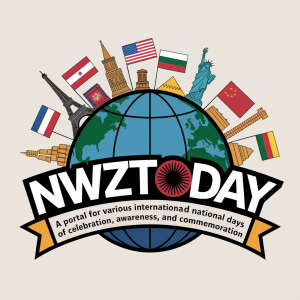Why Do We Celebrate the International Day for Disaster Reduction?
Every year on October 13, the world unites to recognize the International Day for Disaster Reduction (IDDR). This important day is dedicated to promoting a global culture of disaster prevention, preparedness, and resilience. It serves as a reminder that while natural disasters are often beyond our control, their impacts can be mitigated through strategic planning and collective action.
A Brief History of IDDR
The International Day for Disaster Reduction was first established in 1989 by the United Nations General Assembly. Initially observed as part of the International Decade for Natural Disaster Reduction, this day has evolved into an annual event aimed at fostering awareness and encouraging communities to become active participants in reducing disaster risks.
In 2009, the UN General Assembly officially designated October 13 as the permanent date for observing this day. It aligns with the Sendai Framework for Disaster Risk Reduction 2015-2030, a global strategy aimed at reducing disaster risk and building resilient communities worldwide.
The Significance of IDDR
Disasters come in many forms—earthquakes, floods, hurricanes, wildfires, and even pandemics. They can cause immense loss of life, disrupt livelihoods, and damage infrastructure. The International Day for Disaster Reduction highlights the importance of understanding these risks and taking proactive steps to minimize their impacts.
This day emphasizes the power of preparedness and resilience. It engages governments, organizations, and individuals in discussions about disaster risk reduction strategies, from early warning systems to sustainable development practices. The ultimate goal? To create a world where fewer lives are lost, and communities are better equipped to bounce back from disasters.
How is IDDR Observed?
Across the globe, governments, NGOs, and individuals organize activities to mark this significant day. Here are some common ways it’s celebrated:
- Workshops and Seminars: Educational events are held to spread awareness about disaster risk reduction strategies and best practices.
- Community Drills: Simulated disaster response activities help train communities on how to respond effectively in emergencies.
- Social Media Campaigns: Hashtags like #DisasterReductionDay and #ResilienceMatters trend as people share stories, tips, and resources.
- Tree Planting and Clean-Up Drives: Environmental activities emphasize the role of nature in disaster mitigation.
Fun Facts About Disaster Reduction
Here are some interesting tidbits to brighten your day while learning about disaster risk reduction:
- Did you know that mangrove forests can reduce tsunami wave heights by up to 66%?
- Earthquakes are most frequent in Japan, but Chile holds the record for the strongest quake ever recorded (a magnitude of 9.5 in 1960).
- Disaster risk reduction saves an estimated $7 for every $1 invested!
What Can You Do?
Disaster risk reduction isn’t just for governments and big organizations—it starts with you! Here’s how you can contribute:
- Learn about the disaster risks in your area and how to prepare for them.
- Get involved in community resilience programs or volunteer for disaster response organizations.
- Spread awareness about the importance of disaster preparedness on social media.
- Advocate for sustainable practices to reduce climate-related disasters.
Remember, every small action counts. By working together, we can build a safer, more resilient world for future generations.
Let’s Make a Difference
This October 13, take a moment to reflect on the importance of disaster risk reduction. Whether you participate in an event, share a resource, or simply educate yourself, you’re contributing to a global effort to save lives and protect communities. Together, we can reduce the impact of disasters and create a brighter, more resilient future.









